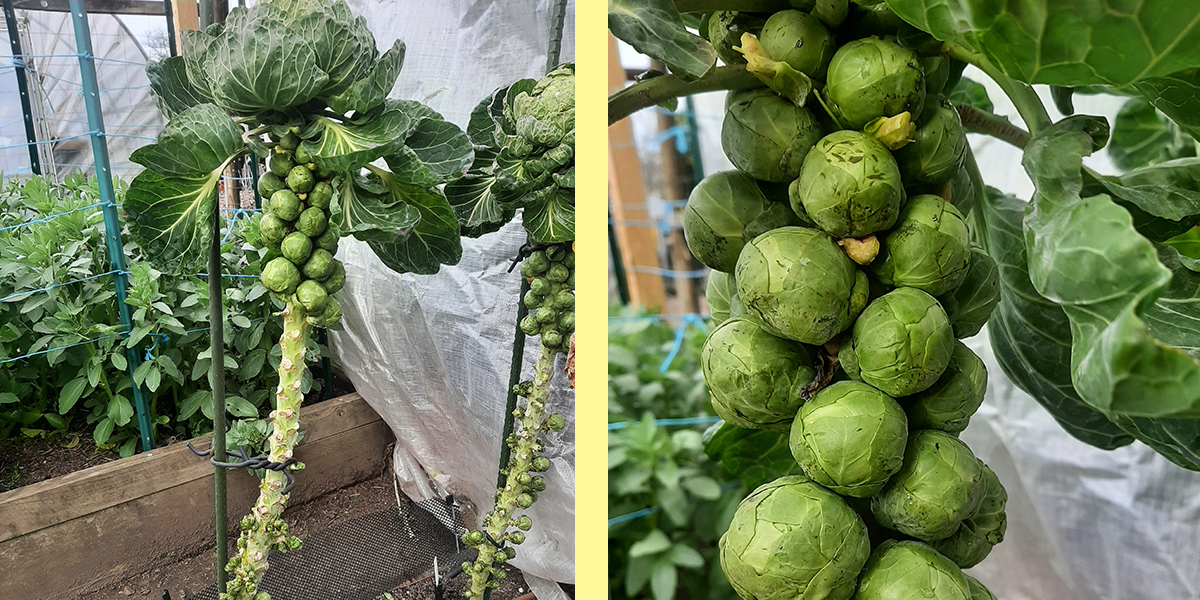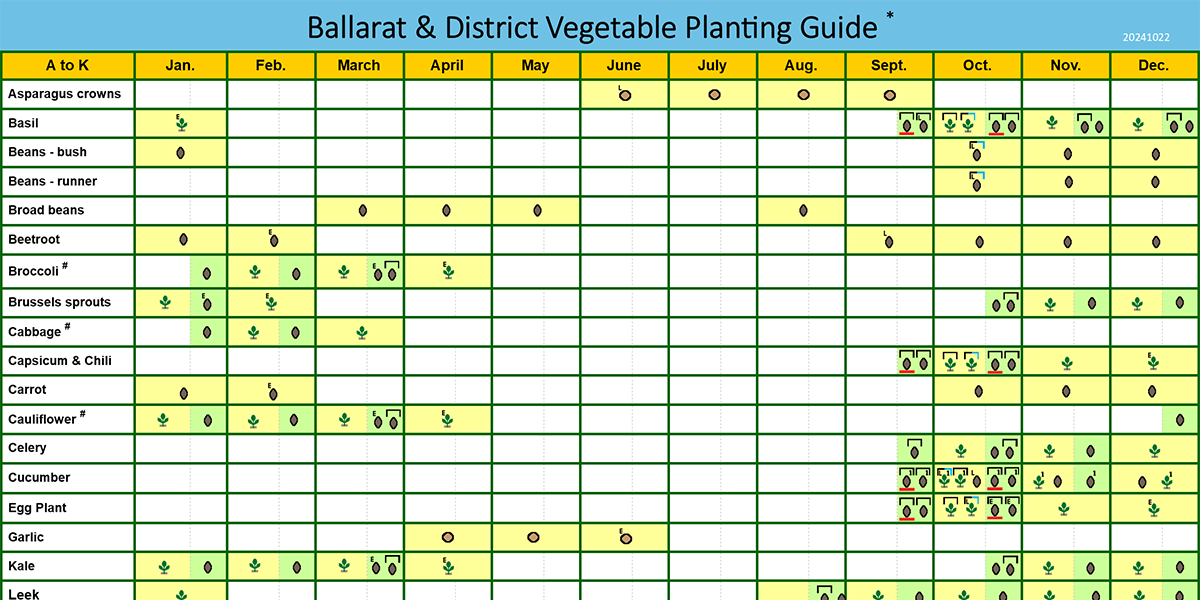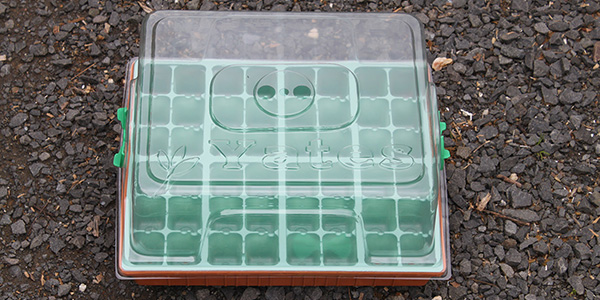Brussels sprouts can be a relatively hard vegetable to grow as they have specific requirements that, if not met, will result in small and poor quality sprouts. This explains page how I grow Brussels sprouts.
- RICH WELL DRAINED SOIL
- PLENTY OF FERTILISER
They are heavy feeders. - FULL SUNLIGHT
- SLIGHTLY ACID TO ALKALI SOIL
6.5 t0 7.5 pH.
| - PROTECTION FROM THE WIND
As Brussels sprouts are top heavy plants they can be easily blown over in strong wind. - COLD WINTERS
Frosts will improve the flavour of the sprouts. - REGULAR WATERING
Although open pollinated varieties (such as Long Island) can produce a good crop of Brussels sprouts I have found that you will get better results if you use F1 hybrid seeds. Two F1 hybrid varieties that I have found to produce good sprouts are Diablo and Abacus.
Add fertiliser and, if the pH of your soil is less than 6.5 add a handful of lime or dolomite per square metre, turn the bed in and rake it flat. The amount and type of fertiliser can vary. I use a specific formula for alkaline soil loving vegetables, see Fertilsing Vegetable Beds/alkali soil loving vegetables for details.
While Brussels sprouts seeds can be sown direct the best way to grow them is in seedling trays then plant them out when the seedlings are big enough. As Brussels sprouts seedlings transplant easily the best way to grow them is in a styrofoam seedling propagation box or some other large seedling tray. For more information see: Styrofoam Seedling Propagation Boxes.
Seedlings that transplant easily, such as lettuces, broccoli, cabbages, cauliflowers and Brussels sprouts, can be easily grown in styrofoam seedling propagation boxes.
Below are the recommended planting times for Brussels sprouts. I usually plant my Brussels sprouts seeds in a seedling box in mid to late November for planting out as seedlings in mid to late December (Ballarat & District Zone).
Note that this planting guide is for South Eastern Australia only. To view a printable PDF of this Brussels sprouts planting guide click HERE.
Plant 50 cm apart and 100 cm between rows. Water the seedlings in with diluted liquid fertiliser. If the weather is hot then temporarily cover the seedlings with 50% shade cloth, supporting the shade cloth above the seedlings with sticks or small hoops. Remove the shade cloth after the seedlings have established themselves (in about seven to ten days).
- REGULARLY WATER THE PLANTS
- OCCASSIONALLY APPLY A DILUTED LIQUID FERTILSIER
- STAKE THE PLANTS WHEN HALF GROWN
This is because Brussels sprout plants are top heavy and can easily fall over in a strong wind. - WHEN THE FIRST SPROUTS START TO FORM BEGIN REMOVING THE LOWER LEAVES
Gradually removing more leaves as the plants mature. - MONITOR FOR PEST PROBLEMS

LEFT: Half grown brussels sprouts plants after they had been staked and I had begun to remove the lower leaves. The photo was taken on the 10th of February, the seedlings were planted on the 14th of December. RIGHT: The same Brussels sprouts plants (photographed from a different angle) on the 15th of April.
It is my experience that brussels sprouts plants are particularly prone to aphid infestations, much more than other brassicas plants such as broccoli or cabbage. They also are susceptible to cabbage butterfly caterpillars, though this seems to be a lesser problem. Suggested treatment for these pests:-
- APHIDS
Spray with pyrethrum as soon as aphids are detected. Pyrethrum is a natural poison made from the Pyrethrum daisy. - CABBAGE BUTERFLY CATTERPILLAR
Spray with Dipel two or three times in the warmer weather. Dipel (bacillus thuringiensis) is a biocide that only targets caterpillars, it is safe for predatory insects such as lacewings and ladybirds.
For more information on Pyrethrum and Dipel see: PEST CONTROL – Insects.

LEFT: Brussels sprouts plant infested with aphids. RIGHT: Closeup of the aphid infestation. I have been growing Brussels sprouts for many years now but I have yet to get through a season without having to spray them to control aphids. Whereas I rarely have to spray other brassica plants (such as broccoli or cabbage) for aphids.
Begin harvesting in late autumn when the sprouts have begun to form into hard balls. Brussels sprouts will hold well on the plant all winter, so they can be harvested when required instead of all at once.

Brussels sprouts plants in winter with mature brussels sprouts on them.






